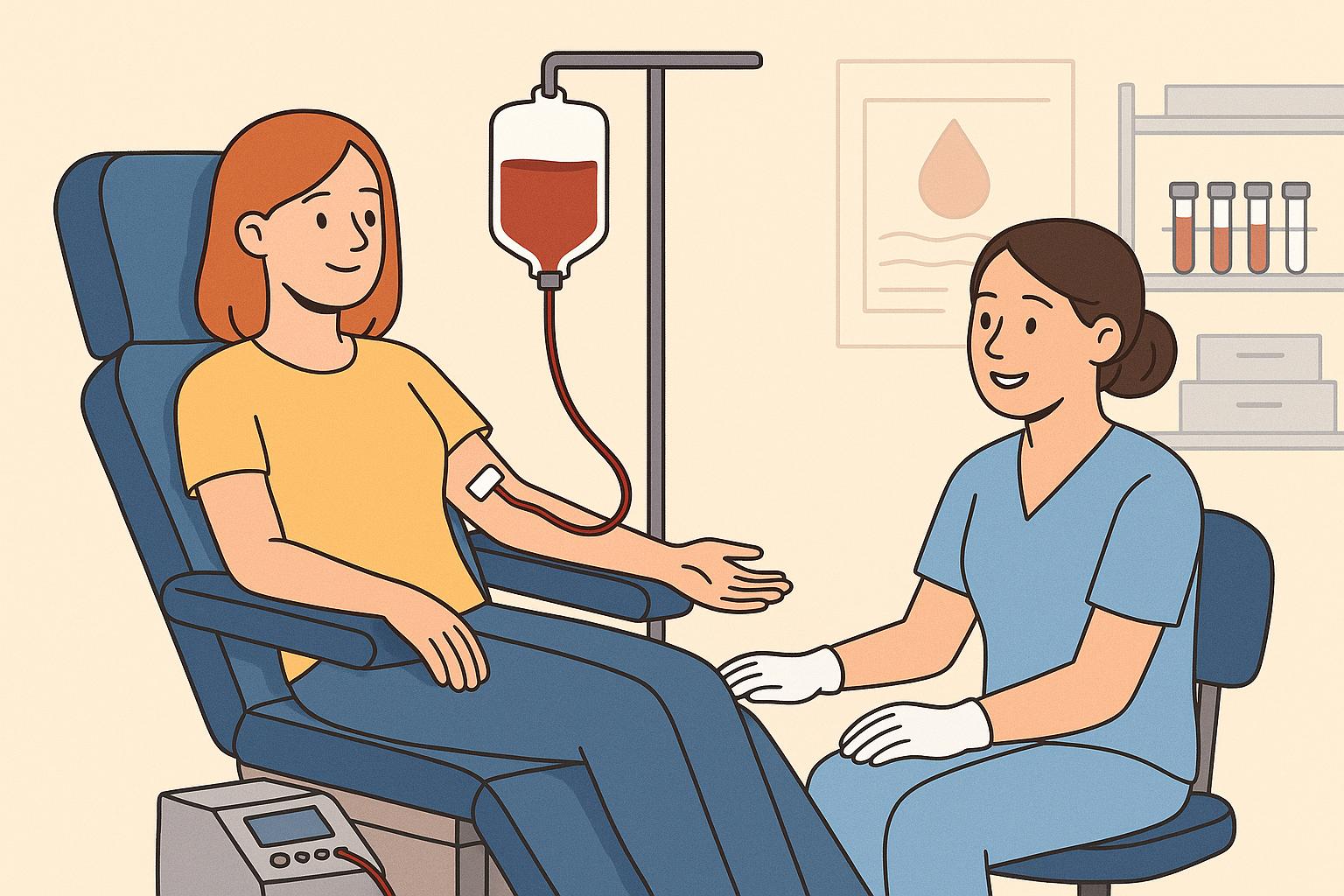Arrival and Registration
When you arrive at a blood donation center, the initial step involves registration. This process is designed to ensure that all necessary information is collected systematically and efficiently. Upon arrival, donors are typically required to present a form of identification. This is an important step as it verifies the donor’s identity and maintains the integrity of the donation system.
Subsequently, you will be asked to fill out a questionnaire, which gathers critical personal information. The data collected generally includes your full name, contact details, and sometimes specific demographic data that help the center manage donor records accurately. Beyond personal identification, some centers incorporate questions related to your current health status, recent travel history, or exposure to certain conditions that might affect donor eligibility. These inquiries help to establish whether you qualify to donate blood at that point in time.
Understanding your recent travel history is particularly significant because certain regions may present health risks like infections that can be transmitted through blood. This registration process is a cornerstone of the donation experience, ensuring a safe procedure for the donor and recipient alike. Precautionary measures, verified through honest and complete answers in the questionnaire, are vital to a secure donation framework.
Health Screening
Once the registration is complete, you will proceed to a short yet comprehensive health screening. This screening is conducted by a medical professional trained to assess prospective donors. The process often starts with basic vital sign assessments. By checking your blood pressure, the center can ensure that it is within a safe range for donating blood. Low or high blood pressure could pose risks during donation, hence this evaluation is essential.
A similar examination involves checking your pulse to make sure it is at an acceptable rate. This can indicate whether you are experiencing stress or any other underlying health issue. A hemoglobin test is also typically part of this health screening. The level of hemoglobin in your blood reflects the capacity to handle a donation without negative effects on your well-being.
Further, you will undergo a series of questions concerning your medical history and lifestyle habits. Questions might involve any recent illnesses, ongoing medications, or dietary practices that could influence your eligibility. Clearly, maintaining a strict set of criteria is necessary to protect both the donor’s health and the safety of the collected blood. Understanding these questions and answering truthfully ensures a compatible and effective blood donation process.
The Donation Process
After the health screening is successfully concluded, and assuming all conditions are met, you will be invited to the actual donation phase. Here, comfort is prioritized, and you will be asked to either sit or lie down in a position conducive to a successful blood draw. The healthcare staff or phlebotomist will meticulously clean a selected area on your arm. This is to ensure sterility and prevent any infection at the needle insertion site.
Once cleansing is done, a sterile needle is gently inserted into a vein, typically in the arm. The needle is connected to a bag that will collect your blood. An average blood donation session lasts between 8 to 10 minutes, during which approximately one pint of blood is donated. While this is occurring, you may relax and pass the time as you wish, knowing the process is being handled with the utmost care and precision.
The entire donation appointment, including the initial health screening and subsequent procedures, typically spans around an hour. This efficient process represents a small time investment from the donor, yet it results in a significant contribution to the healthcare system, potentially saving lives.
Post-Donation Care
Post-donation, there is a brief recovery period designed to help your body adjust and begin replenishment. You will be directed to a recovery area where trained staff will offer you a selection of snacks and beverages. This refreshment period plays a crucial role, as consuming snacks and drinks aids in stabilizing your blood sugar levels and rehydrating you after donation.
Advisors typically recommend that you rest for about 10 to 15 minutes, indulging in the provided refreshments. This offers your body a chance to start recovering its blood volume without rushing back into daily activities. It’s an opportunity to relax and feel assured that your generous contribution is noted and valued by the center.
Follow-Up and Recommendations
Before you depart from the center, you’ll be furnished with guidelines for post-donation care. Generally, one of the main pieces of advice is to hydrate well over the course of the day. Drinking plenty of fluids aids in the quicker restoration of your body’s natural equilibrium. Equally, avoiding physically demanding tasks or exertions for the rest of the day is advised, allowing your body to recuperate efficiently.
Importantly, should you feel any discomfort, dizziness, or unusual symptoms after your departure, it is crucial to rest by lying down until the feelings subside. Furthermore, keeping the donation facility informed about any adverse effects ensures proper support is provided if necessary.
For frequent donors, upcoming donation dates can be scheduled in alignment with the center’s timeline. Regular donations can typically occur every 8 to 12 weeks, a period set to allow the body ample time to recover and generate new blood. Ultimately, participating in regular donations can be an enriching practice, contributing positively to public health and the well-being of many individuals.
For additional information on the donation process, finding locations, or reviewing eligibility, visit trusted resources such as the American Red Cross.
